Are you trying to identify weeds with fuzzy leaves growing in your yard?
In this list, we look at some of the most common types you’re likely to find and help you recognize the weed using photos and detailed descriptions.
Let’s dive in.
Lamb’s Ear (Stachys byzantina)
Also known as wooly hedgenettle, lamb’s ear is native to southwestern Asia but is now naturalized in many parts of the world, and is often grown by gardeners as a ground cover. The plant can be a fast and aggressive grower in the right conditions but is not yet officially listed as an invasive weed in the US.
Lamb’s ear is well known as a weed with fuzzy, velvety leaves (1). The plant has a spreading growth, forming an attractive, soft-textured mat of blue-green leaves that have a silvery appearance due to the covering of white wooly hairs.
The leaves are tongue-shaped and can grow up to 6-inches long. In the summer, the weed produces a tall spike of purple flowers that varies in height from 12-18 inches, while the leaves stay close to the ground, spreading out about a foot.
Lamb’s ear is an edible weed that also has medicinal properties. Some people like to eat it in salads where it adds a fruity taste reminiscent of apples and pineapples. You can also use the dry leaves to make tea.
Daisy Fleabane (Erigeron annuus)
ERIGERON ANNUS BY SALICYNA, CC BY-SA 4.0, VIA WIKIMEDIA COMMONS
Daisy fleabane is also known as annual fleabane. Like other plants called fleabane, dried clusters were previously believed to eradicate fleas from a dwelling. The weed is sometimes mistaken for daisies because of the similar flowers with a yellow central disk and numerous small white petals.
The weed has two different types of leaves. The basal leaves are fuzzy, lanceolate-to-ovate shaped, grow up to 15 cm long, and have petioles. The stem leaves are smaller, have toothed edges, and are also hairy but don’t grow on petioles.
Daisy fleabane grows between 30-150 cm tall with a central stem covered in white hairs that occasionally branches in the upper half to produce flowering stems with clusters of daisy-like flowers at the ends.
The weed grows in various soil types and thrives in full or partial sun. It can spread aggressively in disturbed areas by reseeding itself, and it’s common to see the plant growing along railroads and roadsides, in abandoned fields, waste areas, and disturbed open woods.
There are many similar broadleaf plants, mostly with hairy leaves, that are commonly called fleabane. The majority of these weeds are species of Erigeron.
Hairy Fleabane (Conyza bonariensis, Erigeron bonariensis)
ERIGERON BONARIENSIS BY JOSEP GESTI, CC BY 4.0 VIA WIKIMEDIA COMMONS
Hairy fleabane is a summer annual or biennial weed in the daisy family known for its rapid growth and aggressive spread. The weed can be very hard to control, spreading through a high volume of wind-dispersed seeds.
Hairy fleabane grows up to 4 ft. tall and has alternately growing leaves from branched stems. Long, soft hairs and short, rigid hairs cover the gray-green leaves, giving the leaves on this weed a fuzzy feel. The leaves towards the base of the plant are usually egg-shaped with a short leaf stalk. The leaves higher up the stems are linear to lance-shaped.
HAIRY FLEABANE FLOWERS BY FOREST AND KIM STARR
The plant blooms from June to September, producing numerous flowering stalks at the end of the stems. The small, yellow disk flowers are encased by cream-colored bristles and sit in a green cup-shaped base. The flowers are replaced by seed puffs that resemble dandelion puffballs.
The weed is sometimes confused with horseweed, but you can distinguish them by the narrower, more crinkled leaves of hairy fleabane.
You’ll often come across hairy fleabane in disturbed sites in urban areas, cultivated fields, and along roadsides. The weed can spread into garden areas and grows between cracks in pavement stones and driveways.
Purple Deadnettle (Lamium purpureum)
Purple deadnettle is a winter annual broadleaf weed that you’ll often find in moist areas such as drainage ditches, the edges of woodland, or shady lawn areas with poor drainage. Purple deadnettle is an aggressive grower, and in the right conditions, the weed quickly spreads.
Purple deadnettle has distinctive square, reddish-green stems. At the top of the stems are small pink-purple flowers. If you look closely, you’ll see that the weed has leaves that are shaped like a heart or triangular with gently scalloped edges. The fuzzy leaves are covered with fine hairs.
Purple deadnettle is usually a low-growing plant, although sometimes it grows up to 10-inches tall.
Common Burdock (Arctium minus)
Also known as lesser burdock, common burdock is a biannual weed. It’s a common weed to find growing in your yard and on your lawn. You also find it in pastures, paddocks, next to roadsides, and alongside streams.
Identifying burdock is simple. During the first year of growth, the weed develops a basal rosette. Burdock is a weed that grows huge leaves that reach 6-18 inches long and 4-14 inches wide. The leaves are dark green, heart-shaped, and have fine hairs on the underside (2), making the leaves fuzzy. The broad leaves have reddish stems that make them resemble rhubarb leaves.
In the second year of growth, burdock sends up a tall hollow stalk that can reach 6 feet high with alternate growing leaves that are smaller than the basal leaves. The plant blooms from July to October, producing lavender to purple flowers at the end of branches and in the leaf axils.
The flower heads resemble a thistle and are covered in spines. Each flower head dries up as they age. And turn into prickly burrs with curved spines. The burrs easily hook onto clothing or the fur of animals to spread the seed they contain.
Once common burdock is established it’s difficult to get rid of the weed because of its deep taproot and the large volume of seeds each plant produces. The plant only reproduces by seed, so try to prevent it from doing so by cutting.
Unlike many weeds, common burdock has some uses. The leaves, stalks, and roots are all edible, and you can use them for medicinal purposes.
Common Mullein (Verbascum thapsus)
Also called great mullein and woolly mullein, common mullein is a giant weed that grows over 7 ft. tall. The common mullein plant has large grey-green leaves that are thick and oval-shaped. A fuzzy covering of woolly hair makes Mullein a good example of a weed that has leaves with a velvety texture (3). Common mullein leaves grow from 4-12 inches long and 1-5 inches wide.
Common mullein is a biennial weed. In the first year, the plant grows a basal rosette of furry leaves. And in the second year, the weed develops a tall stem. Common mullein flowers from June to September. With small yellow flowers clustering in a large spike at the top of the stem.
Originally native to Europe, Asia, and North Africa, great mullein is an invasive weed in many areas of North America and Australia.
Green Alkanet (Pentaglottis sempervirens)
Green alkanet is a common perennial weed. Because it’s an attractive wildflower, some people choose to plant it in their garden. But green alkanet can spread quickly in moist soil and shady areas. And it can be problematic to get rid of, so many people consider it an annoying weed.
Green alkanet is a weed with blue flowers that’s in the Boraginaceae family and resembles borage and forget-me-not. The plant flowers from April to June. Producing blue 5-petalled flowers with a white center that grow in clusters on long flower stems.
Green alkanet can grow over 3 feet tall. And has big, egg-shaped leaves that grow up to 16-inches long. The leaves grow alternately and are connected to the stem by long petioles. All parts of the weed are covered in stiff hairs, making the leaves fuzzy to touch.
Green alkanet roots grow thick and deep. And because the tap root is brittle, it often breaks when you try to pull the weed from the ground. This is a problem because green alkanet can regrow from any part of the roots that you leave in the soil. So take care when removing this weed.
Borage (Borago officinalis)
Borage is a plant in the Boraginaceae family, the same as forget-me-nots. It’s an annual weed that flowers in the summer producing clusters of star-shaped, bright blue flowers. The flowers have a cone that sticks out from the center and black-purple stamens.
Borage is a tall and somewhat gangly weed. When fully grown the plant can reach 3 feet in height. Large oval or egg-shaped leaves grow up to 30 cm long and 20 cm wide and are covered in a prickly fuzz. The greenish-gray stems of the plant are also prickly.
Borage is a prolific self-seeder. And the weed can spread quickly, easily escaping gardens in which it’s cultivated. It grows best in moist, well-drained soil and full sun. But this weed can thrive in a range of conditions. And will grow in dry, nutrient-depleted soils and partial shade as well.
Because this weed has prickly stems and leaves, you should use a thick pair of gardening gloves before trying to remove the weed by hand.
Orange Hawkweed (Hieracium aurantiacum, Pilosella aurantiaca)
Orange hawkweed is also known as devil’s paintbrush, flameweed, and devil’s weed. It’s a native plant to Europe and an introduced species in North America.
Although sometimes sold in nurseries as an ornamental plant, orange hawkweed is also considered a noxious weed in many areas.
You’ll often find orange hawkweed growing in pastures, meadows, and sometimes as an annoying weed on your lawn, where it aggressively outcompetes and crowds out native plants with its dense growth.
Orange hawkweed has tall flowering stems that usually grow up to 24-inches. At the top of the stems are clusters of red-orange flowerheads. The flowerheads have an orange center with red at the edges and grow to about 1-inch in diameter.
Shortly after they start to flower, each plant sends out white-fuzzy stolons that creep along the ground up to 12-inches helping the weed to spread. Orange hawkweed also spreads by seeds and rhizomes.
PILOSELLA AURANTIACA BY JOOST J. BAKER IJMUIDEN
The leaves are mostly in a basal rosette and are lanceolate, with fuzzy hairs on both sides. You might see 1 or 2 stem leaves.
You’ll usually find this weed growing in sunny locations, although it can sometimes grow in partial shade. It’s common to find orange hawkweed in meadows, pastures, forest areas, and along roadsides.
Hoary Cress (Cardaria draba)
Also known as whitetop, hoary cress is a native of Europe and widely introduced to other parts of the world, including North America, and is considered a noxious weed in many areas. Hoary cress is a creeping perennial weed with early spring growth that will often appear in your garden beds and rapidly spread through rhizomes and seeds.
The weed has slightly hairy stems that grow up to 2 ft. tall. Gray-green, fuzzy leaves grow alternately from the stems. The leaves are lanceolate-shaped, with upper leaves connected directly to the stem by lobes and lower leaves connected by a short petiole (4).
The plant blooms from May to June. Flower stalks radiate from the end of the plant stems, with dense clusters of small white flowers at the end of the stalks. Seeds form inside heart-shaped capsules, and each plant produces somewhere between 1,200 to 4,800 seeds each year.
Hogwort (Croton capitatus)
Hogwort is also known as Texas goatweed and wooly croton. The plant is native to central and eastern USA but is considered a noxious weed throughout the midwest.
The weed grows between 1-2 ft. tall and has branched stems covered with wooly hairs that can be either rusty brown or white. Hogwort is a weed with fuzzy leaves due to a dense covering of hairs and have a velvety feel when touched. The leaves are egg-shaped or lanceolate, grow alternately from the stems, and sometimes have wavy margins. Because of all the woolly hairs that cover the plant, the weed has a whitish appearance.
Hogwort blooms from June to October, producing small white flowers that grow at the end of the stems, densely clustered around the tip.
You’ll often see hogwort growing in fields, prairies, pastures, and roadsides. It can cause problems in pastures as the weed is poisonous to horses and cattle if it gets mixed into hay. But usually, the animals avoid it and a pasture with a lot of hogwort growing in it is likely overgrazed.
Read More:
Reference:
- Stachys Byzantina – https://plants.ces.ncsu.edu/plants/stachys-byzantina/
- Common Burdock – https://extension.wsu.edu/whitman/2013/11/common-burdock/
- Verbascum Thapsus – https://plants.ces.ncsu.edu/plants/verbascum-thapsus/
- Hoary Cress (Cardaria draba) – https://agri.nv.gov/Plant/Noxious_Weeds/WeedList/Hoary_cress_(Cardaria_draba)/
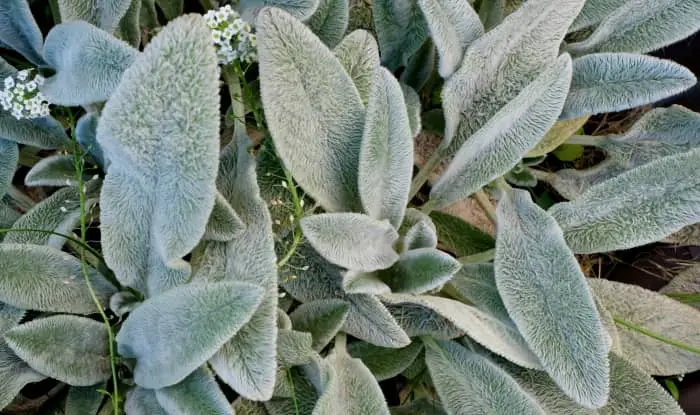
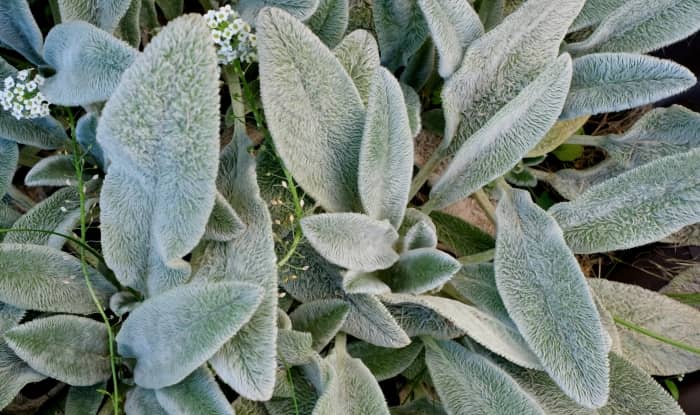
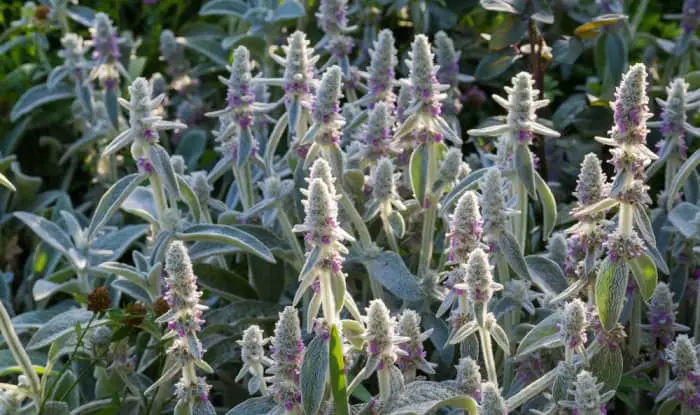
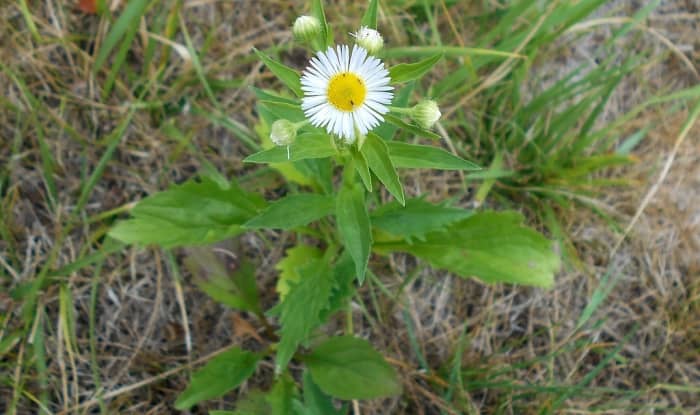
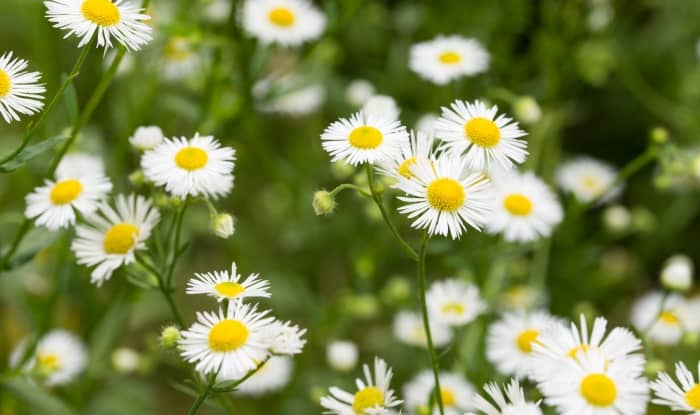
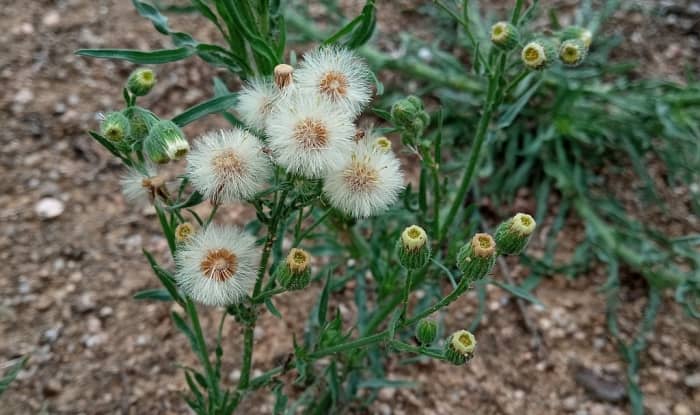
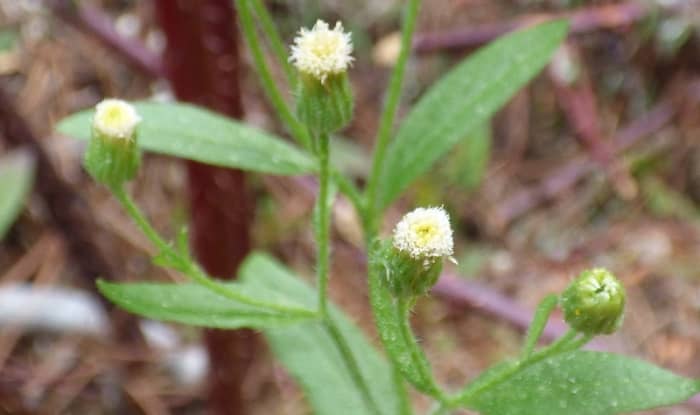
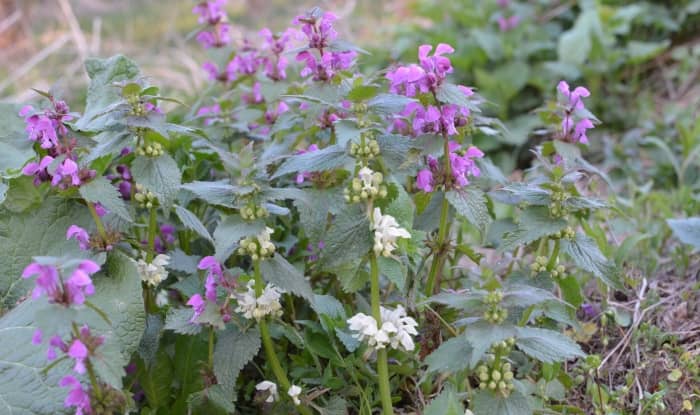

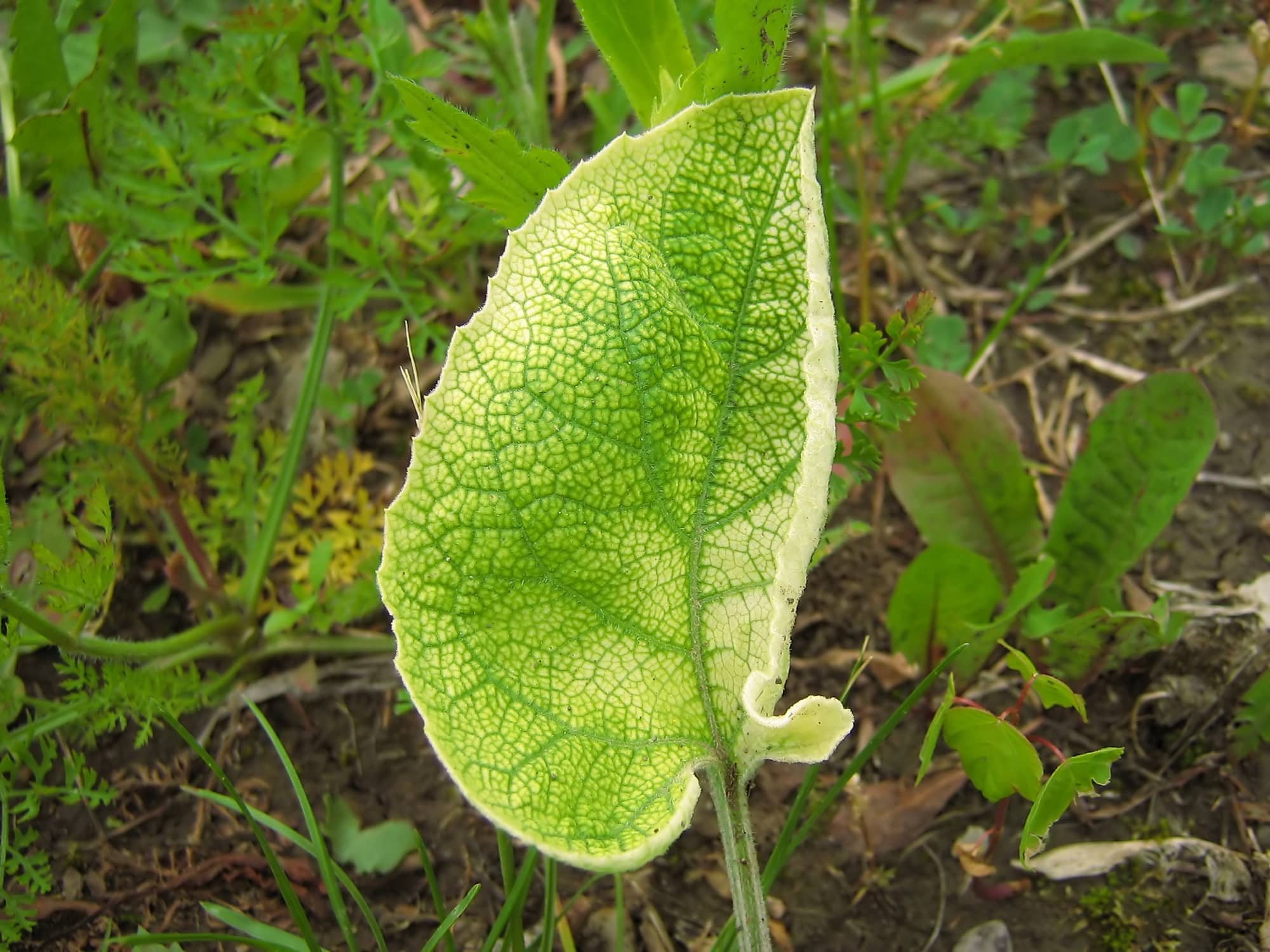


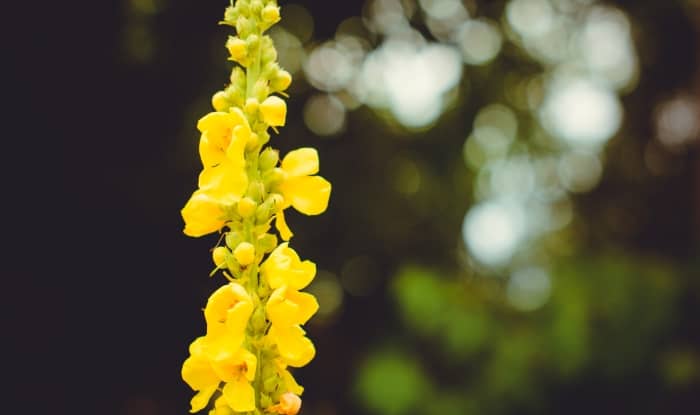
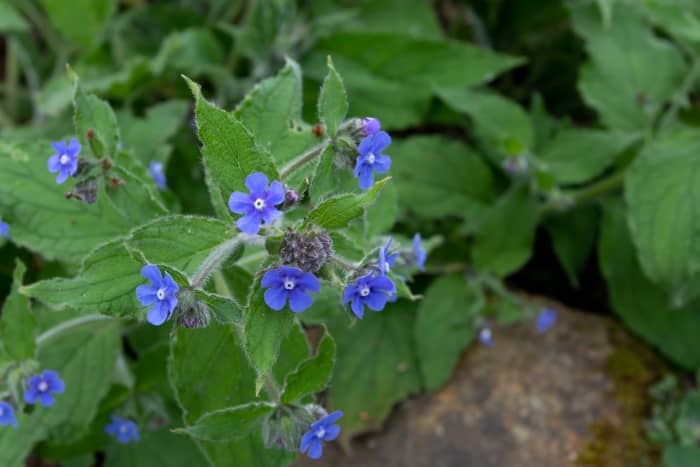
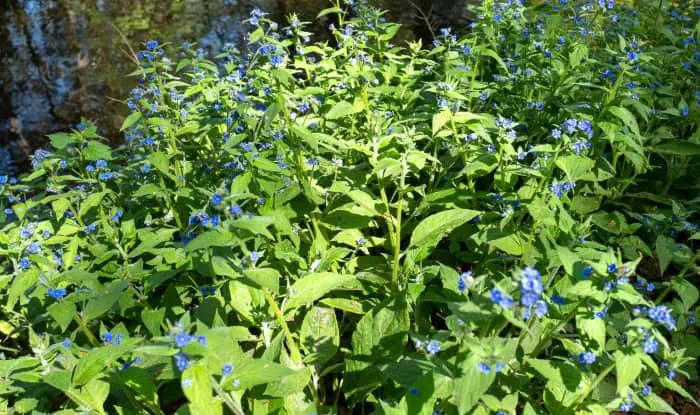


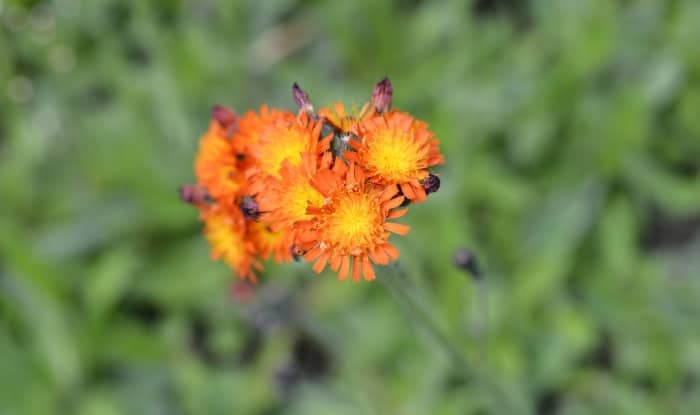

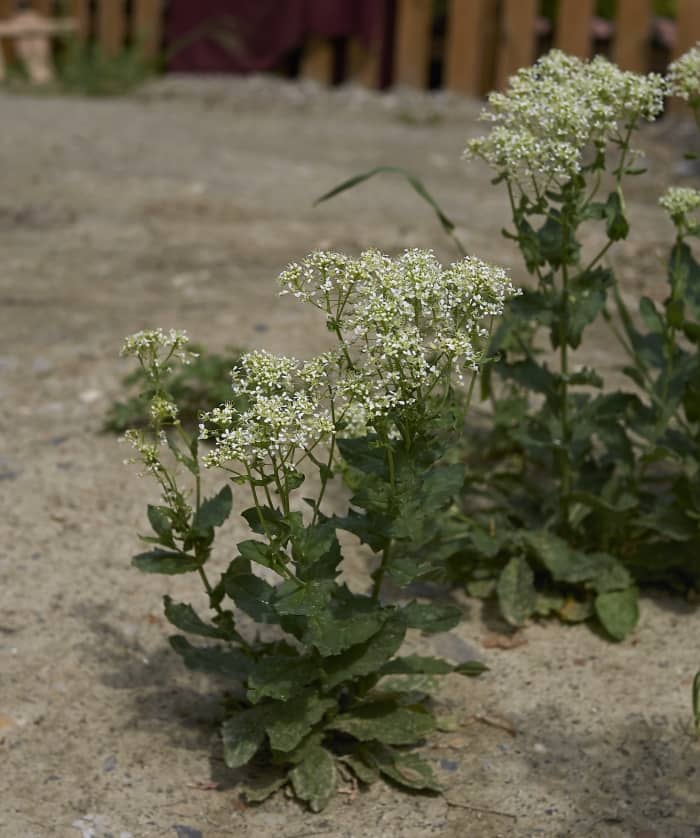
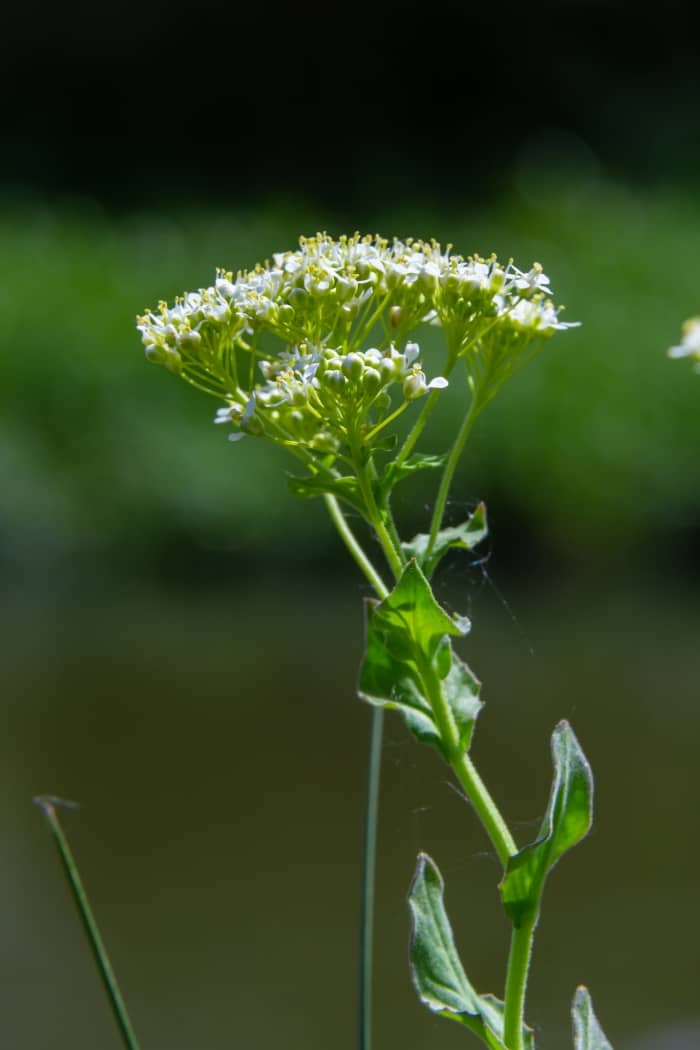

Thank you for great pictures of the whole plant! So much easier to identify a plant if we see the leaves, the flowers, and the whole plant. I am frustrated with sites that only show the flowers – and there are a lot of “forget-me-not”-like flowers that grow on a lot of different plants. And some are keepers (like Adelina Grande Houndstongue – a native to northwest that looks similar to cynoglossum). Your orange Hawksweed is a great photo!